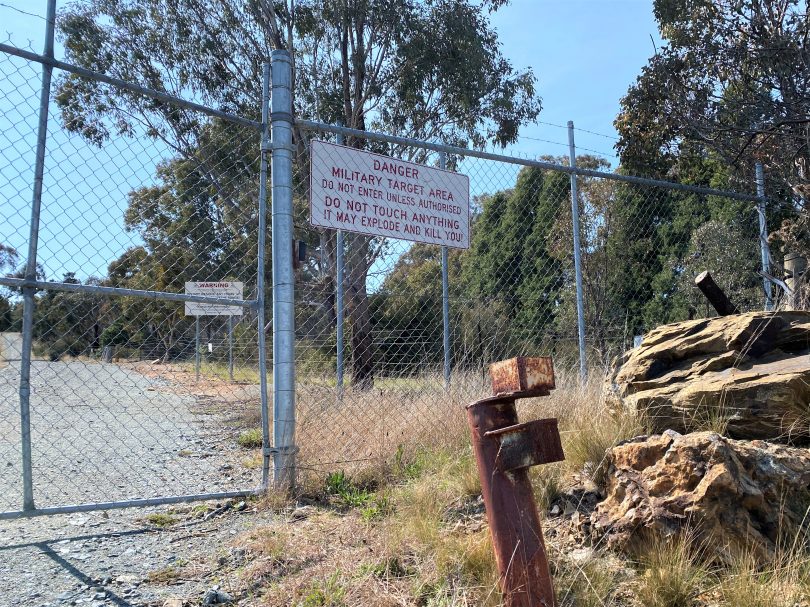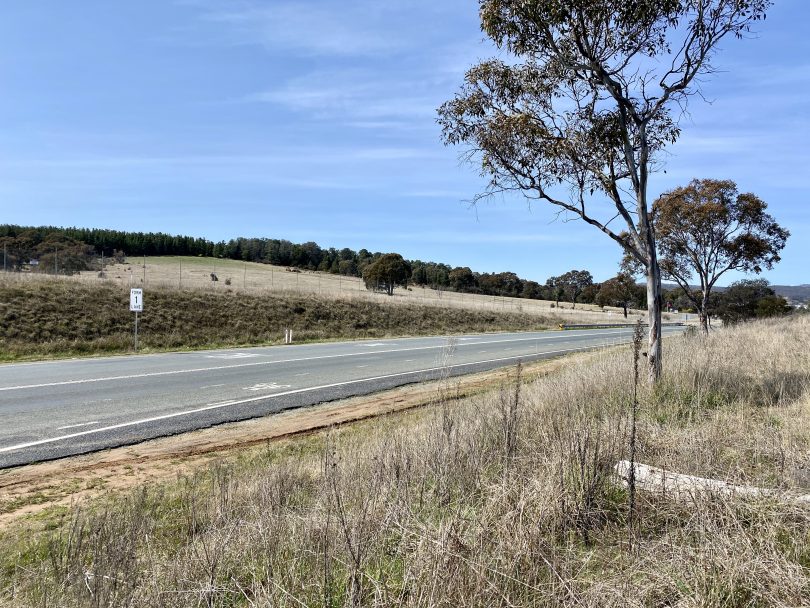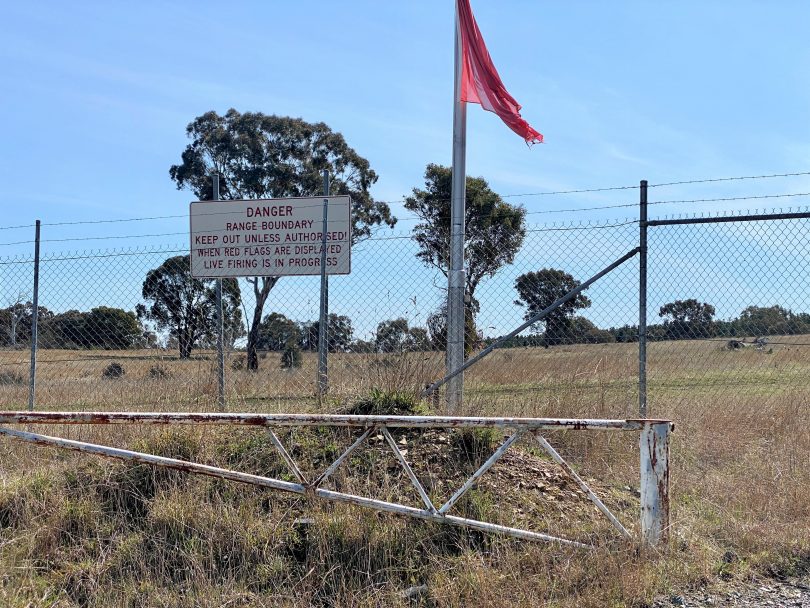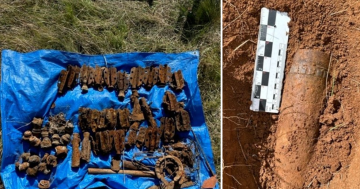
Not the place to be kicking rocks around. Photo: James Coleman.
At least once a week, the topic of conversation in Queanbeyan inevitably turns to answering the age-old question: ‘What was that bang?’
Theories abound. A hoon? The Russians? Someone dropping the pizza stone?
Last weekend it was actual explosives.
The Queanbeyan-Palerang Regional Council (QPRC) alerted residents to a military training exercise taking place just up the road.
“Australian Defence Force (ADF) personnel will conduct training in the vicinity of the Majura Training Area, Canberra, during the period 28 to 31 August 2021,” the notice read.
“The public should not be alarmed if they see military personnel carrying weapons. Residents of nearby areas may see explosions, hear the noise they generate or feel the vibrations associated with them.”
Named in typical flamboyant military style, the Majura Training Area is a short drive north of Canberra Airport along Pialligo Avenue.

Looking towards the Majura Training Area across Pialligo Avenue. Photo: James Coleman.
The 3,649 hectares of undulating paddock and eucalypt forest started peacefully enough as part of the Campbell family’s ‘Duntroon Sheep Station’. The Defence Force then came along in 1911, founded the Royal Military College in Canberra, and designated the eastern side of the Majura Hill a testing zone.
Since then, it has seen aerial bombing and strafing by the RAAF, artillery, mortar and anti-armour firings, demolition firings, and training in grenades, marksmanship and military tactics.
Nowadays, it hosts Army training exercises for the Royal Military College – Duntroon (RMC-D), with headquarters, accommodation, and a mess hall on-site at ‘Camp Blake’.
Twice a year, Army and Air Force beginners put on their protective combat uniforms and camouflage and take to the range with real grenades, guns and bayonets.
The blend of scenery and manufactured obstacles makes it the perfect place to stage espionage, ambushes and assaults, much like a real battlefield.
The area is scattered with various designated firing ranges, some potentially littered with unexploded ordnance. This explains the foreboding collection of signs at both entrances to the area, warning not to “touch anything” as “it may explode and kill you”.
The cadets are introduced to the arsenal of weapons used by the modern Australian Army, starting with the standard-issue rifle, known as the ‘Enhanced F88 Austeyr’.
Its forebear is used in over 30 countries thanks to a robust design, a useable range of 400 metres, and a whole host of attachments offering everything from increased stabilisation to night vision.
Last weekend’s training specialised in ‘high explosives weapon systems’ and included the rifle’s ’40-millimetre grenade launcher attachment’, as well as fragmentation grenades and claymores.
Claymores spit out 700 mini steel balls over a distance of 100 metres – deadly for any humans within that area and effective against soft-skinned vehicles. Grenades can hold anything from coloured smoke to 4,000 steel balls and can kill anything within six metres and wound within 30.

The red flag is up. Photo: James Coleman.
Captain Daniel Kirkman says it’s important that trainees get into these skills early on so they have the maximum amount of time to get familiar with them.
“We have officer trainees from different countries, officer trainees that are in their 30s and 40s all the way to those who were 17 when they first joined,” he says.
Cadet Jasper Ottway was five weeks into training during the last high-explosives week.
“I applied to the Army as soon as I was able to when I was 15 and six months old,” he says.
“Coming straight from high school into this was a big change, now that I’m detonating high explosives and shooting rockets and grenades. I definitely wasn’t expecting to be this far into weapon qualifications, but enjoying it nonetheless.”
All training is managed and overseen by captains and sergeants, so danger – although definitely present – is managed.
RMC-D cadets begin in ‘III Class’, a six-month block of training that covers all the basics of soldiering, before moving to II Class and I Class. The entire curriculum extends over 18 months, but is flexible for those juggling Army training with a civilian job.
Passing II Class means passing Majura’s gruelling ‘Exercise Shaggy Ridge’, described as one of the most arduous training experiences many soldiers will ever undertake in their military careers. It’s designed to ensure cadets keep a level head under stress by pushing them to the limit.
But amidst all the bangs and bullets, the RMC-D also assures us that “all training is conducted in a manner that accounts for COVID-19 restrictions and good health management processes”.
Wondering when the next bangs are scheduled? Visit Noise and training notices.













